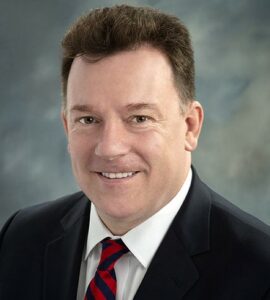By Joseph McManus, RICP®, Financial Planner, Prudential Advisors

Photo/submitted
Today, most of us expect to live longer, healthier and more active lives. How are you going to spend your time in retirement? Will you visit family? Travel? Volunteer?
The possibilities are endless but when you do decide, the next step is determining how your choices translate into dollars and cents. So ask yourself: can I afford the lifestyle I envision? Will I have dependents? What will my other expenses be?
These are just a few of the questions that need answering, but following through still does not guarantee a dream come true. There are three popular myths about retirement that you want to avoid falling prey to.
Myth #1—Lower expenses in retirement
In the past, it’s been suggested that a good target for retirement income was 50-80 percent f pre-retirement after-tax income. However, your mortgage might not decrease, your healthcare and insurance costs may increase and with more free time you may tend to spend more money, depending on your situation. In short, you can’t just assume your retirement income needs will decrease during retirement. A good tactic is to base your planning on a range of scenarios.
Myth #2—My Social Security and pension will be enough
Traditionally, income at retirement has come from three sources — government programs, employer-sponsored plans, and private savings. However, today private savings is becoming an increasingly more important part of the equation.
Social Security was never designed as an alternative to personal responsibility. And, the higher your pre-retirement income, the less you will receive from Social Security as a percentage of pre-retirement income. When it comes to employer-sponsored pension plans, the trend in recent years has been for employers to offer tax-advantaged retirement savings plans to employees instead of employer-funded pensions. One difference is that while a pension plan is guaranteed, a retirement savings plan (401(k) plans are the most popular) are subject to the ups and downs of the stock market. Another difference is that retirement savings plans today are often funded largely with the employee’s contributions.
If you fail to contribute or make poor investment choices, the benefits you receive from your retirement savings plans could turn out to be less than expected.
Myth #3—I know how long my money’s going to last
Life expectancy is on the rise. You may end up being retired longer than you were in the workforce and this can make a big difference in how much you have to save while still working. Your life expectancy can make a big difference. For example, if you start with a retirement nest egg of $775,000 and earn 6 percent on your money, you can expect to receive about $75,000 per year for 15 years before your money runs out. If you live 20 years in retirement, you will need to start with $915,255 instead of just $775,000, to stay in the money for the duration of life.
After dispelling these myths, you may want to recalculate the estimate of what it’s going to take to finance the retirement lifestyle you envision. If you’re like many people, you may encounter a gap between what you need and what you can expect to have. Your choices are pretty straightforward:
· Delay your retirement date.
· Reduce your retirement income goal.
· Increase your savings level.
· Increase the return on your investment.
A well thought-out retirement strategy can be flexible enough to incorporate these changes.
A financial professional can get you started and help you monitor your strategy over the years.
For more information, contact Joseph McManus, RICP®, a Financial Planner with The Prudential Insurance Company of America’s Greater New England Financial Group, located at 293 Boston Post Road West, Suite 110, Marlborough, Mass. McManus can be reached at Joseph.McManus@Prudential.com and 508- 382-4904.











